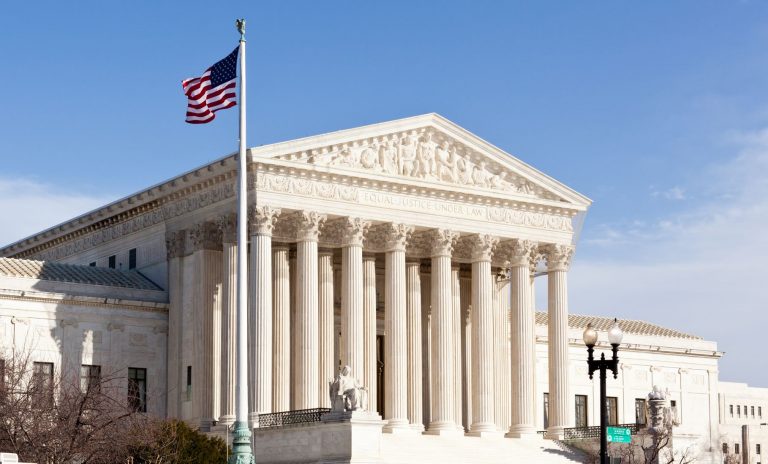Is Separate Equal For Public School Sports?
Is Separate Equal For Public School Sports?
How will the Eleventh Circuit’s Ruling In Adams – Separate Is Equal for Public School Bathrooms – Affect Constitutionality of Florida Statute Prohibiting Transgender Girls from Participating in Designated Public School Girl’s Sports?
Effective July 1, 2021, a bill was passed, creating a new act in the Florida Education Code, section 1006.205 – the “Fairness in Women’s Sports Act” (Act). The stated intent is to maintain opportunities for female athletes to demonstrate their skill, strength, and athletic abilities while also providing them with opportunities to obtain recognition, accolades, and college scholarships. In order to achieve this goal, the Act requires the designation of separate sex-specific athletic teams and sports.
Specifically, any athletic team or sport, including intramurals and club sports, sponsored by a Florida public K-12 school or public college, must expressly designate such teams and sports based on biological sex at birth – i.e., (1) males, men, or boys; (2) females, women, or girls; or (3) coed or mixed, including both males and females. Although athletic teams or sports designated for males, men, or boys may be open to students of the female sex, the athletic teams or sports designated for “females, women, or girls” cannot be open to students of the male sex. The student’s official birth certificate is considered to have the student correct biological sex provided that the certificate was completed at or near the time of the student’s birth.
In June 2021, the Act was challenged when a transgender female student, D.N., in Broward County filed a lawsuit in the Southern District of Florida, against various Florida governmental entities (including the governor in his official capacity, Florida High School Athletic Association (FHSAA), Broward County School Board, and State Board of Education) claiming it was unconstitutional and violated her rights protected under the Equal Protection Clause and Title IX, which prohibits discrimination based on sex. The governmental entities then filed motions to dismiss the lawsuit.
In early 2022, before ruling on the motions, the district court stayed case, citing to the St. Johns County School Board bathroom case which was pending at the Eleventh Circuit Court of Appeals – Adams v. School Board of St. Johns County, Florida. In Adams, a transgender student sued the school board, alleging the school’s bathroom policy, which provided that students must use the bathroom of their biological sex determined from their birth certificate, was unconstitutional. The issue on appeal in Adams was whether separating the use of male and female bathrooms in public schools based on a student’s biological sex violates the Equal Protection Clause and Title IX of the Education Amendments Act.
On December 31, 2022, the Eleventh Circuit Court (applying to Alabama, Georgia, and Florida) in Adams held it did not – separating school bathrooms based on biological sex is constitutional and comports with Title IX and the Equal Protection Clause. The school’s policy was lawful and the court concluded public schools have the right to segregate bathrooms and locker rooms by biological sex. For further analysis, see Top of FormBottom of FormIn the Case of Public School Bathrooms: Separate Is Equal.
Following the Adams ruling, on January 6, 2023, the Southern District of Florida reopened the D.N. case challenging the Act which bars transgender female student athletes (boys transitioning into girls) from playing on girl’s and women’s sports teams. Defendants filed renewed motions to dismiss, relying on Adams, and D.N. filed a response in opposition. On Friday, March 24, 2023, Defendants filed their reply brief. Accordingly, the motions to dismiss are now ready for the district court’s ruling.
The State Board of Education’s Position
The State argued that courts have long accepted that biological males are physiologically different from biological females and that if male athletes were permitted to compete with female athletes, it would ultimately displace and exclude female athletes. The State argued that the challenged Act simply codified this recognized policy because the Act, recognizes that males are not at risk of displacement by female athletes.
The State argues that the issue with D.N.’s argument is that gender identity, unlike sex, has nothing to do with athletic performance and the Eleventh Circuit’s recent decision in Adams disposes of D.N.’s claims.
The Adams Court analyzed the plaintiff’s equal protection claim two ways. First, as a sex-based classification claim, without regard to the plaintiff’s transgender status, since the plaintiff was a biological female who sought access to bathrooms designated for males. The Adams Court concluded that sex-based classification was permissible because important governmental interests supported the separation of biological males and females in bathroom settings. Second, as a gender identity discrimination claim. The Adams Court concluded that because the bathroom policy made no mention of gender identity, the plaintiff must show a disparate impact and discriminatory purpose and because there was no evidence of a discriminatory purpose, the policy was constitutional.
The State argued that like the bathroom policy upheld in Adams, the law D.N. challenges classifies students on the basis of sex, not gender identity, and thus precludes biological males from participating on sports teams designated for biological females without respect to any person’s gender identity. The State argues the sex-based classification is substantially related to an important governmental interest: preservation of biological females’ opportunities to participate and succeed in athletic competition and not be displaced in athletics by biological males. The State argues that just as biological differences between sexes permit a school to deny a biological female access to a male designated bathroom, so too biological males may be lawfully denied access to female designated sports teams. The State argues that Adams again controls to the extent D.N. alleges discrimination on the basis of transgender status because the Act is silent as to transgender status and D.N. can neither make a plausible allegation of disparate impact nor discriminatory purpose. The State argues the Act excludes all biological males, regardless of gender identity, from female athletics, and sex-separated athletic teams promote the important objective of affording girls and women the same opportunity to complete that biological males have long enjoyed.
The State also argues that Adams forecloses D.N.’s Title IX claim because gender identity is a distinct concept from sex, and Title IX concerns only the latter. The State argues that as in Adams, where a Title IX regulation expressly allowed sex-separated bathrooms, Title IX does not require students to be assigned to athletic teams according to gender identity. The State argue that like Adams, this case does not involve conformity or non-conformity with sex stereotypes, but rather the physiological differences between biological males and females.
D.N.’s Position
D.N. argues that Adams does not require dismissal of her lawsuit. She argues that the State would have the court believe that the inclusion of one young transgender girl on a single sports team in a Florida High School will destroy women’s equality in sports, making it impossible for girls to have equal opportunity and even eliminate sex segregated sports teams. Such argument is hyperbole without any legal or factual support.
D.N. argues that the important governmental interests advanced in Adams are completely different. In Adams, the State was protecting students’ privacy in school bathrooms. In contrast, here, the State is preserving biological females’ opportunities to participate and succeed in athletic competition. In Adams, the court recognized there is a right to bodily privacy and most people have a special sense of privacy in their genitals and involuntary exposure of them in the presence of the other sex may be demeaning and humiliating. D.N. argues that the challenged Act, which would force D.N. to play on a boys’ team, does not further this privacy interest.
D.N. further argues that Adams is further distinguishable because in Adams, the school attempted to accommodate transgender students, not exclude them entirely. Here, however, D.N. argues that the State wants the Court to reach this conclusion without providing the parties an opportunity to complete discovery to establish that there is a discriminatory intent behind the Act. The Act’s exclusion of her from the girls’ teams is based on discrimination against people who are transgender and D.N. argues the State has failed to meet its burden by showing that categorically excluding transgender girls from participation on girls sports teams is substantially related to the governmental objective of ensuring athletic opportunities for girls. D.N. argues that the bathroom policy in Adams applied equally to transgender males and transgender females and the school provided an accommodation for transgender students. Here, however, D.N. argues the challenged Act only excludes transgender girls from participation in school sports teams that match their gender identity.
D.N. also argues that there is compelling scientific and medical evidence that sports are not jeopardized by allowing transgender girls to play female sports and she should be given an opportunity to conduct expert discovery on the issue, particularly where, D.N. is a girl, has not experienced male endogenous puberty, has been on puberty blocking medications and female hormones for years, and cannot safely play on a boys’ team or be in a boys’ locker-room.
D.N. argues that the Act and the State’s response is replete with stereotypes about transgender girls and their bodies. Potential complaints about violations of the challenged Act, including D.N, or any student someone perceives as being transgender participating in girl sports, are allegations likely based on stereotypes about what women and girls should look like or behave like. D.N. argues that the challenged Act discriminates against transgender students because there is no reason for a statute to condition participation in girls’ sports on the presentation of a birth certificate unless the purpose was to exclude transgender athletes. Simply put, D.N. believes that the State is discriminating against her based on sex by treating her differently than cisgender girls.
What’s Next for Florida Public Schools and Colleges?
This lawsuit could set forth guidelines on what public schools and colleges are allowed to do regarding transgender athletes participating in scholastic sports. School Boards and Boards of Trustees should then revise athletic guidelines, athletic participation materials, and overall approaches to transgender student athletes accordingly.
Also this month, the State of West Virginia asked the U.S. Supreme Court to review a similar law, West Virginia’s Save Women’s Sports Act, which bans male student athletes who identify and present themselves as female from playing and competing on female sports teams after the Fourth Circuit Court of Appeals determined the law to be unconstitutional. If the U.S. Supreme Court takes the case – B.P.J. v. West Virginia State of Board of Education, its ruling could be dispositive on whether Florida’s Fairness in Women’s Sports Act is constitutional.
The RumbergerKirk Educational Law Team will continue to monitor this issue and provide updates as they develop.







